Are you sure it's a SOLIDWORKS PDM Permission?
 SOLIDWORKS PDM permissions can be tricky at times to the point where you don’t know for sure if the issue you are having is actually a permission issue at all. The best way to test if it’s permissions is to log in as the admin user and see if you can perform the action. If you can it’s a permission issue.
SOLIDWORKS PDM permissions can be tricky at times to the point where you don’t know for sure if the issue you are having is actually a permission issue at all. The best way to test if it’s permissions is to log in as the admin user and see if you can perform the action. If you can it’s a permission issue.
What permission could it be? In this blog, I’m covering a few tips where you might want to start looking. I also give a couple examples that demonstrate some common troubleshooting processes in looking for a permission.
SOLIDWORKS PDM Permissions should always be set at the group level, not on the user itself
The first example is users can’t see files or they are only seeing a couple files when they should be seeing more or maybe their vault view doesn’t look like their co-workers. Let’s take one step back and start with the rule that permissions should always be set at the group level, not on the user itself. This way once you set the permissions for the group, all you have to do is add or remove users and they will acquire the same permissions as another user who would be in the same group (for example: engineering group). What permission am I going to look for if the user can’t see files? Folder Permission: “Show working versions of files”.
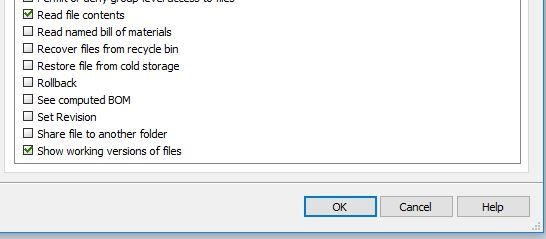
This needs to be set in conjunction with ‘Read file contents’ on each state of the workflow it’s in.

If both the folder permissions read file contents and show working versions of files and the state permission of read file contents aren’t set, you will not be able to see the files. You will have control however of what files the users are seeing by taking away permissions in the workflow to read file contents if you don’t want them to see specific states of the workflow. This may apply for a revision controlled workflow and you only want non-engineering users to see the files when they are production released.
If you can’t see your files and your folders are blue, it’s not a permission issue. You have switched to Work Off-line mode. To correct this, you will need to go to Tools>Work On-line.
Another little tip to watch out for is when you go to check in a file and you get this error:
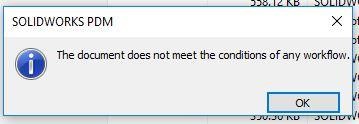
Make sure you have permissions to add files to the initial state.
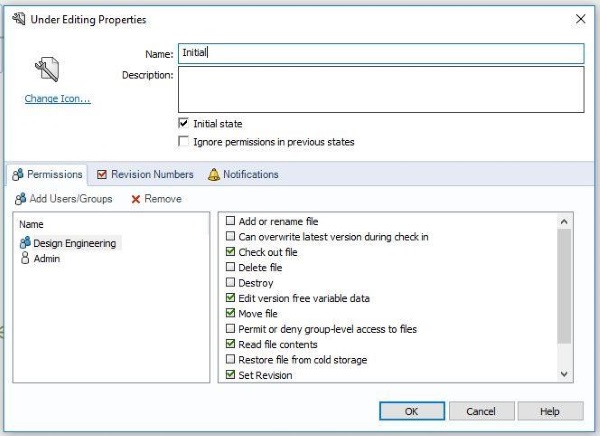
The permission not checked here that’s causing the issue is ‘Add or rename file.’ This can cause a lot of frustration thinking your workflow conditions aren’t set properly when really it is a group permission. This isn’t always the case, but it’s definitely something to check for.
Retrieving a file from cold storage
Next troubleshooting scenario: A customer calls and states that they have a file in cold storage that they are trying to retrieve. They have given folder and current state permissions of ‘Restore file from cold storage’.
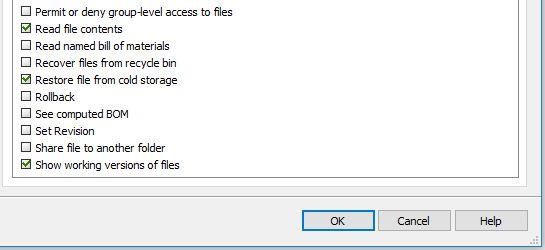
It should restore in their minds. What the customer is missing is that you would need to restore a file from cold storage set on every state the file has passed through in any workflow. This may be your best option if you’re the administrator. However, there is another permission that can be set to allow the file to be restored from cold storage. It is a checkbox on the state called ‘Ignore permissions on previous states.’
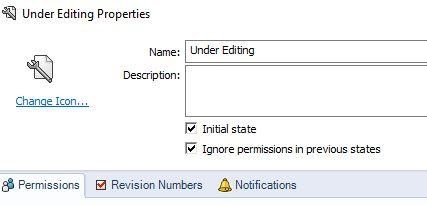
You need to exercise caution with setting this flag. Here’s an example of where it could be risky. You have ‘Ignore permissions in previous states’ checked on a Work in Progress State, which would be at the start of your workflow. You have given the whole engineering department permission to delete and destroy files from this state since they may have created a file and then decided they don’t need it or want to remove it from the vault completely. No harm at all when working in this state of the workflow.
However, since you have checked that box to Ignore permissions, files could have run through the workflow once or even multiple times and are production files. Now the whole engineering department can delete and destroy production released files. It is a very useful permission, but use caution in how you set up your other permissions around it. If you are checking the box for the production released state, that might be an admin function to recover files or whatever action you might need to take. After the admin has completed the action, you may want to uncheck the box to Ignore permissions in previous states in the production released state.
Move file permission
The Move file permission is really handy. You just set the folder and state permissions that you are allowing the file to be moved in and use Move Tree. It works great. However, many users still move their files with the good old fashion cut and paste operation. That works great too if every state has the Move file permission, or you have the Ignore permissions in previous states flag checked. Same rules would apply if you were trying to delete a file that has run through workflow states.
Unable to transition a file
Here’s another handy one that trips people up at times. There’s a flag set in the workflow to stop the same user from being able to transition a file through more than one state. For example, they created the file and submitted it to checking. They check the work themselves. When they go to send it to production approval it won’t allow the transition to happen. This is the flag that is checked on the transition itself to prevent users from checking and approving their own work.

Set Revision permission
The final tip is about the Set Revision permission. Here are six areas that need to be set up in order for this permission work correctly. First of all, you will need to allow folder and state permissions for Set revisions. Next, you will need to make sure you have a revision component, a revision scheme set, a component increment value and a revision variable to write to.
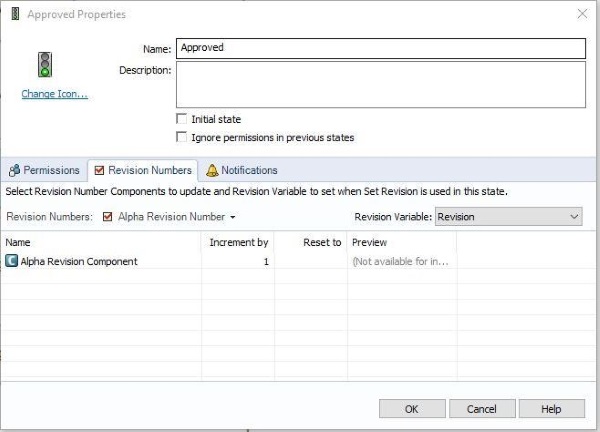
Without all these components set on the state itself, the set revision variable will not work at all. You may be able to get it to work partially, but not get it to write to the revision variable. Point is, you need all six parts to make it work. The permission part is easy, ‘Set Revisions’ for folder and state permissions.
I hope you have found these tips useful. I know logging in as admin and watching it work, then flipping back to the user and seeing it not work over and over can be very frustrating so hopefully, these troubleshooting tips will save you some time in the future.
Related Articles
Connecting SOLIDWORKS PDM via SMTP to Gmail or Office 365
Resetting the PDM Admin Password in SOLIDWORKS
How to use SOLIDWORKS Treehouse and Templates to Create Assemblies Faster
About the Author
 Jodi Degenaer has been in the Engineering field for 19 years. She joined Fisher Unitech in November of 2015 and is a PDM Senior Support Engineer. She has multiple certifications including her CSWE. Her expertise lies in Product Data Management and Design Automation. She worked in the fire truck industry for 8 years and began using SOLIDWORKS in 2004 and Enterprise PDM in 2010. In 2012 she became a PDM Applications Engineer where her primary focus was implementations and instructing the PDM class. Jodi is also DriveWorks certified and has participated in supporting and implementing DriveWorks.
Jodi Degenaer has been in the Engineering field for 19 years. She joined Fisher Unitech in November of 2015 and is a PDM Senior Support Engineer. She has multiple certifications including her CSWE. Her expertise lies in Product Data Management and Design Automation. She worked in the fire truck industry for 8 years and began using SOLIDWORKS in 2004 and Enterprise PDM in 2010. In 2012 she became a PDM Applications Engineer where her primary focus was implementations and instructing the PDM class. Jodi is also DriveWorks certified and has participated in supporting and implementing DriveWorks.

 Blog
Blog 